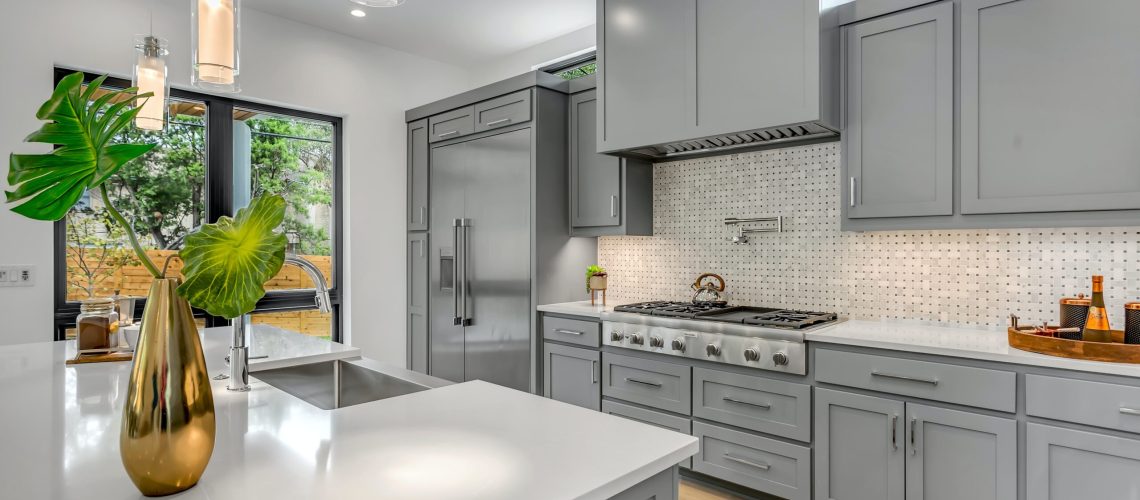Painting cabinets is a project that homeowners can do themselves, but it requires more attention to detail than painting a wall. The key to getting great results is understanding how the process works and ensuring you prepare the cabinets correctly beforehand. If you choose to do it yourself, you might make some mistakes that can be costly, especially if you don’t have ample experience.
Here are some of the common mistakes you should avoid when it comes to kitchen cabinet painting:
Painting Without Priming
Priming is a necessary step when painting cabinets. Primer helps the paint stick to the surface and provides a smooth finish that will make your cabinet drawer pulls pop. You’ll want to prime all surfaces where there is wood or metal touching another surface (such as drawers). You should also prime if you plan on applying a high gloss or low-lustre finish coat over top of your basecoat.
If you have time before painting, let the primer dry for 24 hours before applying the first layer of paint. This gives it time to dry thoroughly and makes sure that your new paint job lasts longer by avoiding any issues with bubbling up due to trapped moisture under layers of paint.
Not Cleaning the Cabinets First
In order to avoid this, you’ll need to ensure that your cabinets are clean and free of dirt, grease and grime. It is also important that you use a good quality cleaner so as not to damage the finish on the cabinets.
Remove all handles, knobs and doors before cleaning them with a soft cloth in order to avoid scratching them or damaging any of their surfaces.
Failing to Fix Any Imperfections Before Kitchen Cabinet Painting
Failing to fix any imperfections in the cabinets first is a common mistake that homeowners make when painting their kitchen cabinets. If you don’t address these imperfections before painting, the paint will show up those flaws and make them even more visible. It’s much easier to fix these imperfections before painting than after—and it might save you from having to repaint entirely!
A few examples of things that could ruin your perfect cabinet colour scheme:
- Cracks in the wood or other dings and dents on doors or drawers
- Water marks, which are very noticeable once painted over
Coat of Paint is Too Thick
When applying paint, it’s best to apply multiple thin coats rather than one thick coat. A good rule of thumb is to allow each coat to dry completely before applying the next one, which may take several hours or even an entire day depending on the humidity in your home. Applying too heavy of a coat will leave you with drips and sags that make it look like you’re trying to cover up some kind of bad workmanship; but if you apply two or three thin layers, this won’t happen!
Thin coats are easier to apply because they don’t drip as much when being brushed on; plus they dry faster so you can get back out there sooner! And finally, thin coats give you the smoothest finish possible which makes for a much nicer looking surface!
Not Using Painter’s Tape
Use painter’s tape to protect surfaces that will be damaged by paint. Painter’s tape is not a substitute for a brush, but it can prevent small drips from happening and save you hours of cleanup work later on. Make sure to place the tape in a way that makes it easy to remove after painting is finished; if you just slap the tape down, it will be very difficult—or even impossible—to get off without damaging the surface below.
Painting cabinets is a bit different than painting walls. The main difference is that they’re made of wood, which means they’re porous and can absorb paint. Because of this, you’ll have to be careful not to apply your paint too thickly or it will drip down the sides of your cabinets (and make you look like a messy amateur). You also need to make sure that your cabinets are completely dry before applying any kind of topcoat or sealant, otherwise it won’t stick properly and could peel off later on down the road.
In conclusion, painting cabinets can be a huge time-saver if you use the right products, clean everything well beforehand and make sure you don’t skip any steps. It’s also important that you choose paint specifically formulated for kitchen surfaces so that your cabinets will stay in good shape over time. If possible, get an experienced professional to do this job for you so they can ensure their work will last as long as possible.
Are you planning to have your kitchen cabinets painted? Our experienced professional painters can address your queries and concerns. Call us today at 086 608 1817 or click here to reach us.
Royalty-free image supplied from Pexels as part of the SEO service from 3R
